"In a world full of croissants, be a kachori"
How a Bombay restaurant trapped me in its glorious embrace
Hello from Mumbai! (Or Bombay, as the locals lovingly call it. I will follow suit.)
Some quick context - I’m on a sabbatical year after getting laid off from my tech job in December 2023, and I’m now using the time to 1) see my parents and relatives in Seoul, and 2) return to Mumbai, which I’ve been wanting to do since I left in 2018. I lived here from 2015-18, thanks to a fellowship from my university.
India played a significant role in my life, both personally and professionally. It’s where someone took a chance on me and gave me a skill set that feeds me to this day. In my 2.5 years here, I met the most generous and supportive humans who nourished both my stomach and spirit. I am absolutely thrilled to be back.
But this is a food newsletter, so let’s stick to that.
Bombay is where I first discovered The Bombay Canteen, a contemporary Indian restaurant I immediately came to love. On August 15, 2015, I walked into their doors and made a tryst with destiny that would come to shake my world, even so many years later.
That day, they hosted their first Independence Day Daawat, which is - get this - an all-you-can-eat + pay-what-you-want meal open to everyone. You come in, sit down in front of a banana leaf, and volunteers walk by and serve you dishes from all over India. All the proceeds go to charity.

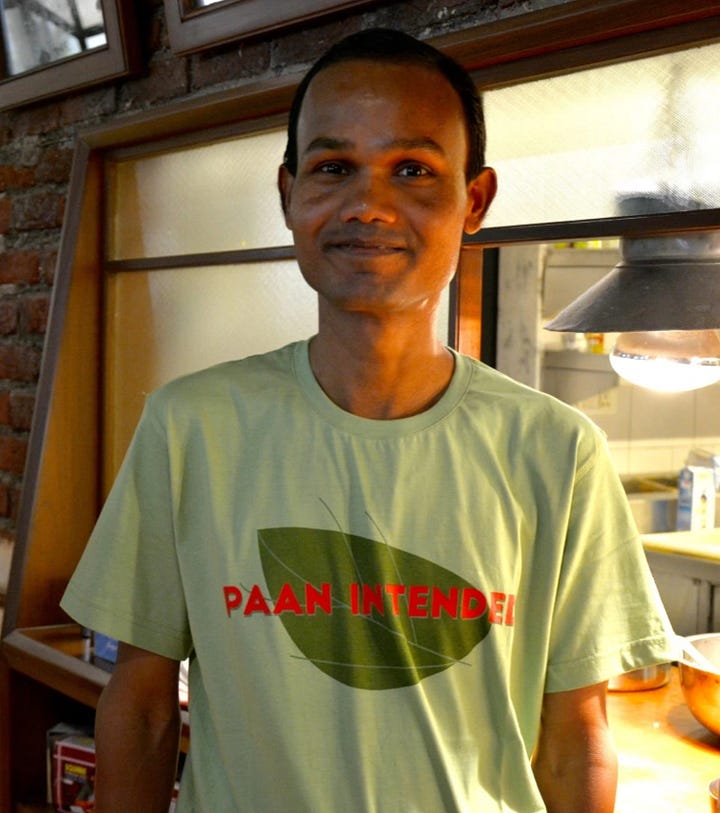
I’ve never forgotten that meal. And since then, I’ve felt strongly that someone needed to do the same for Korean food. I didn’t know it at the time, but Korea even shares the same Independence Day as India. It was on August 15, 1945 that the Japanese surrendered to the Allies and ended 35 years of colonial rule in South Korea.
What I found so impactful about the Bombay Canteen, especially on Independence Day, was that it was so unabashedly proud of being Indian.
You could see it in everything. Not just the menu, which celebrated cuisine from Assam in the north to Kerala in the south, but also the playlist, the art deco design elements in its menu inspired by downtown Bombay’s architecture, and the waiters’ punny t-shirts. Everything screamed: there’s joy and heritage in being Indian.
It was very different from how I’d felt at the time about being Korean.
Unfortunately, I had spent a lot of my childhood in the United States wishing I wasn’t from the country of origin of my parents. Being Korean wasn’t as cool as it is now. The feeling of apprehension when opening a lunchbox of gimbap or mandu (Korean dumplings) as an Asian kid in the US is such a common experience that even my dedicating a whole sentence to it makes me cringe; it’s so cliché. White kids had it so much easier, and I wanted desperately to be them.
Fast forward 9 years: 2 jobs, 3 countries, and 1 layoff later.
The Bombay Canteen has turned into Hunger Inc., a hospitality group with 5 restaurants across the city, including the Bombay Sweet Shop, which is taking an innovative approach to classic Indian mithai, or sweets. It is absolutely mind-boggling to see what this company has accomplished since I was last year.
I, on the other hand, have spent a lot of time making Korean cuisine and finally seeing the beauty in my family’s identity.
So when I got laid off last year, one of the first things I did was email Yash, one of the founders, to ask for advice on how to explore the culinary industry, wondering if maybe a Korean Bombay Canteen could be a thing.
He was extremely generous with his time. In fact, he later put me in touch with a Catalan chef friend of his in Singapore, who put me in touch with the owner of a Catalan restaurant in Barcelona. I had the pleasure of shadowing and working there for a couple months earlier this year.
Yash also offered me a “stage” at one of their Bombay restaurants during my stay here. So I timed my trip to:
volunteer at their 10th(!) Independence day Daawat,
spend a few days observing and helping at their Goan Portuguese restaurant O Pedro, and
look behind the scenes of the Willy Wonka Chocolate Factory that is the Bombay Sweet Shop.
This week, all of that become reality. I’ll tell you all about it in the next newsletter 😁
But what’s a kachori?
This week’s title comes from this amazing shirt that Yash once wore on a podcast video. A kachori is a deep fried stuffed pastry commonly eaten as a snack or as street food.
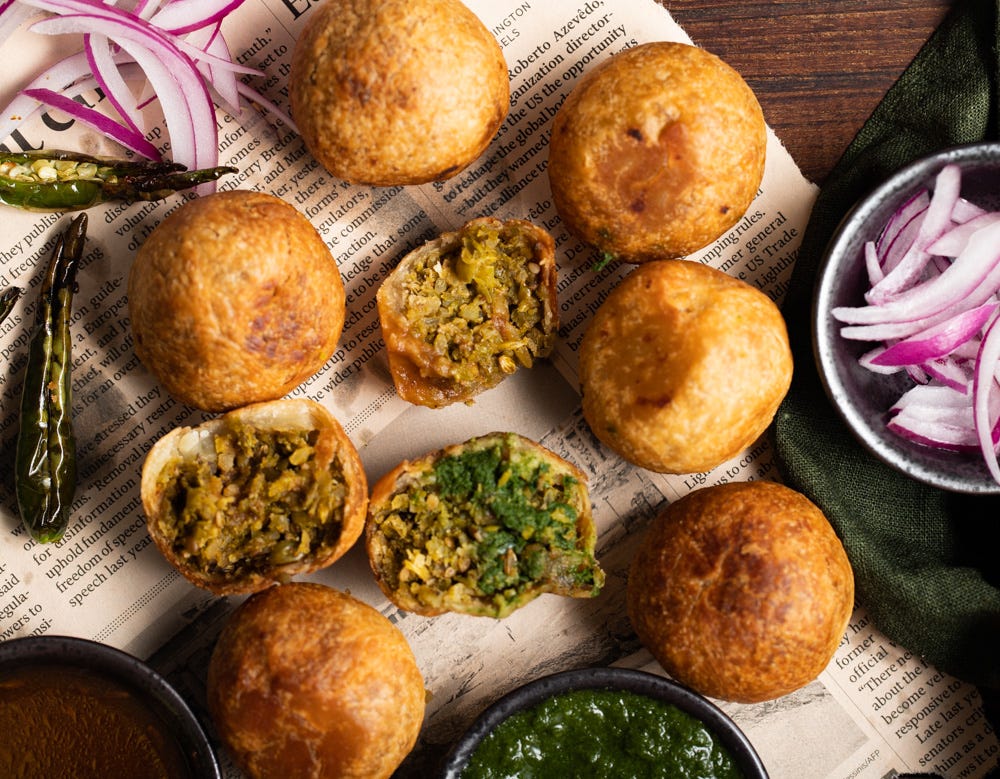
The t-shirt is so right.
Here’s what I’ve learned in my own journey: no one can hoot and holler about all the delightful things produced by your land and people as well as you. Such hootin’ and hollerin’, at a small scale, prevents the world from surrendering to the tyranny of Instagram homogeneity. On a mass scale, it can lead to the independence of an entire nation.1
So please, in this world full of croissants, be a kachori. Or be a patbbang. Or a coca de llardons. Or be a croissant, if that’s the pride and joy of your neck of the woods. Just be the loudest and proudest version of it you can be, because therein lies your unique power. Also, shame is soOoOo 1999.
Here are some highlights from the 2024 Daawat, whose proceeds this year went to Nature:re, an RPG Foundation initiative that’s trying to transform one of Mumbai’s parks into an accessible green space.
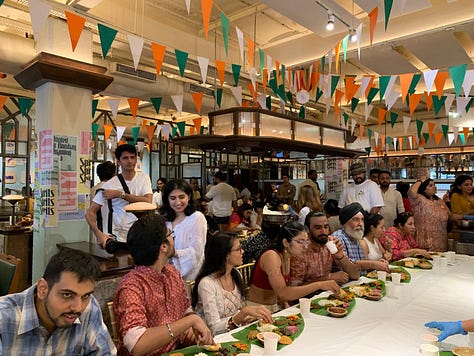
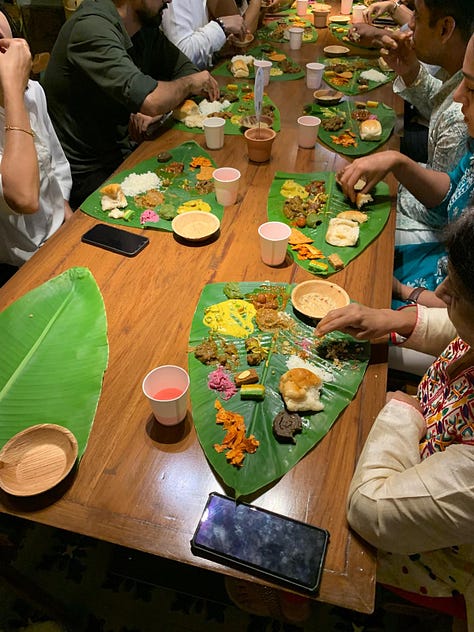
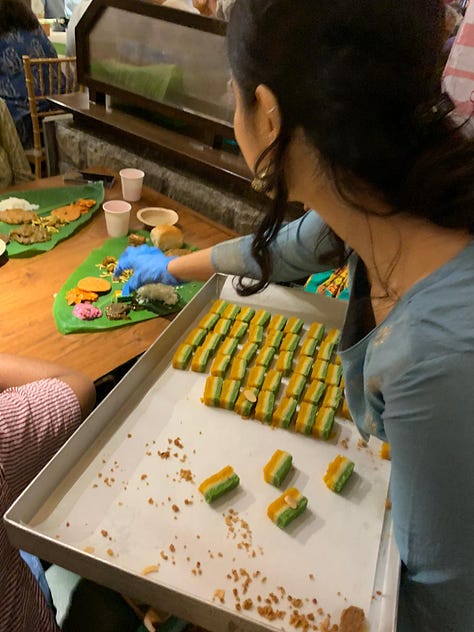
Two dishes that stood out to me:
Notun Alu Dum
📍Assam (northeast India)
You will never guess what these little balls are. They are not beans. They are potatoes! 🤯 Say hello to the cutest little baby potatoes you ever did see. They are native to Assam, a state in the northeast of India, and are known as gutti aloo. They apparently can be stir-fried directly in oil, making them the official winner of The Least High-Maintenance Potato Award 🏆 You can learn more about them here.
Crispy fried patra
📍Gujarat (northwest India)
I could not figure out if this dish was made of flour or pumpkin or something else entirely. Turns out it’s a typical dish from the state of Gujarat and it’s essentially a sliced roll of leaves and dough. Think croissant, but instead of layering butter and dough, you layer colocasia leaves (colocasia is the leaf, taro is the root) and a batter of chickpea flour and spices. It had a unique crispy but chewy texture, and I found the spirals visually striking.
Here’s a recipe I found online which had the following helpful visual:
Below is the rest of the spread. Each of these dishes is worth looking up. Once you’ve done so, you’ll know more about the diversity of Indian cuisine than a lot of people.
👩🏻🍳 Cooking tips
If you haven’t ventured into Indian cooking, now is a great time to start. It can be intimidating and I am obviously no expert myself, but my recommendation would be to start with a simple daal, or lentil soup. Here’s a basic template:
A fat (usually ghee, but oil works fine)
Hard spices (cumin seeds are probably the most essential)
A “sofrito” of onion, garlic, ginger, and tomato. Green chilis if you have them and want heat.
Powdered spices (red chili and turmeric are probably the most essential)
Cooked lentils
To garnish: Herbs and acid (ex. lime)
You’d be surprised to see how many Indian recipes follow this basic format. Egg bhurji? Replace step 5 with eggs.
Any meat curry? Replace step 5 with your favorite protein.
Want something creamier and more luxurious? Add a step between 5 and 6 with coconut milk or blended cashews or other nuts, as in this Kerala fish curry.
This is just a teaser to show that it isn’t as complicated as you think, but this excellent Reddit thread goes into even more detail and is a great place to start. You can level up by experimenting with different spices, regional recipes, and techniques (ex. making tadka).
3️⃣ Barcelona tips for you
I’m not famous enough to get sponsored for these so they’re just plain old recommendations from your friend in food 😘
This South Indian restaurant in Les Corts is my first recommendation, because the first thing to know about Indian food is that it’s not all butter chicken, as most of the West would have us believe. Everything is worth trying here, especially if it’s fried.
This Gràcia restaurant transports you with its food, interior design, and hospitality. And it’s all vegetarian! The starter papads are an absolute delight.
This tiny but mighty shop in Raval has everything you need to stock an Indian pantry.
🌏 Language corner
अंदाज से (Hindi), pronounced andaaz-se
This beautiful phrase that has the same meaning in Hindi, Urdu, classical Persian, and multiple other Indian languages, means “approximately” or “by estimation”. I first discovered it in the context of cooking without measurements or without instructions. It’s a lovely phrase for a lovely concept.
I leave you with some words of wisdom from the floor of the Bombay Canteen:
Amen to that.
Until September 12,
Janey
I really want to quote some passages from India’s first prime minister Jawaharlal Nehru’s The Discovery of India here but that would make this email too long 🥲




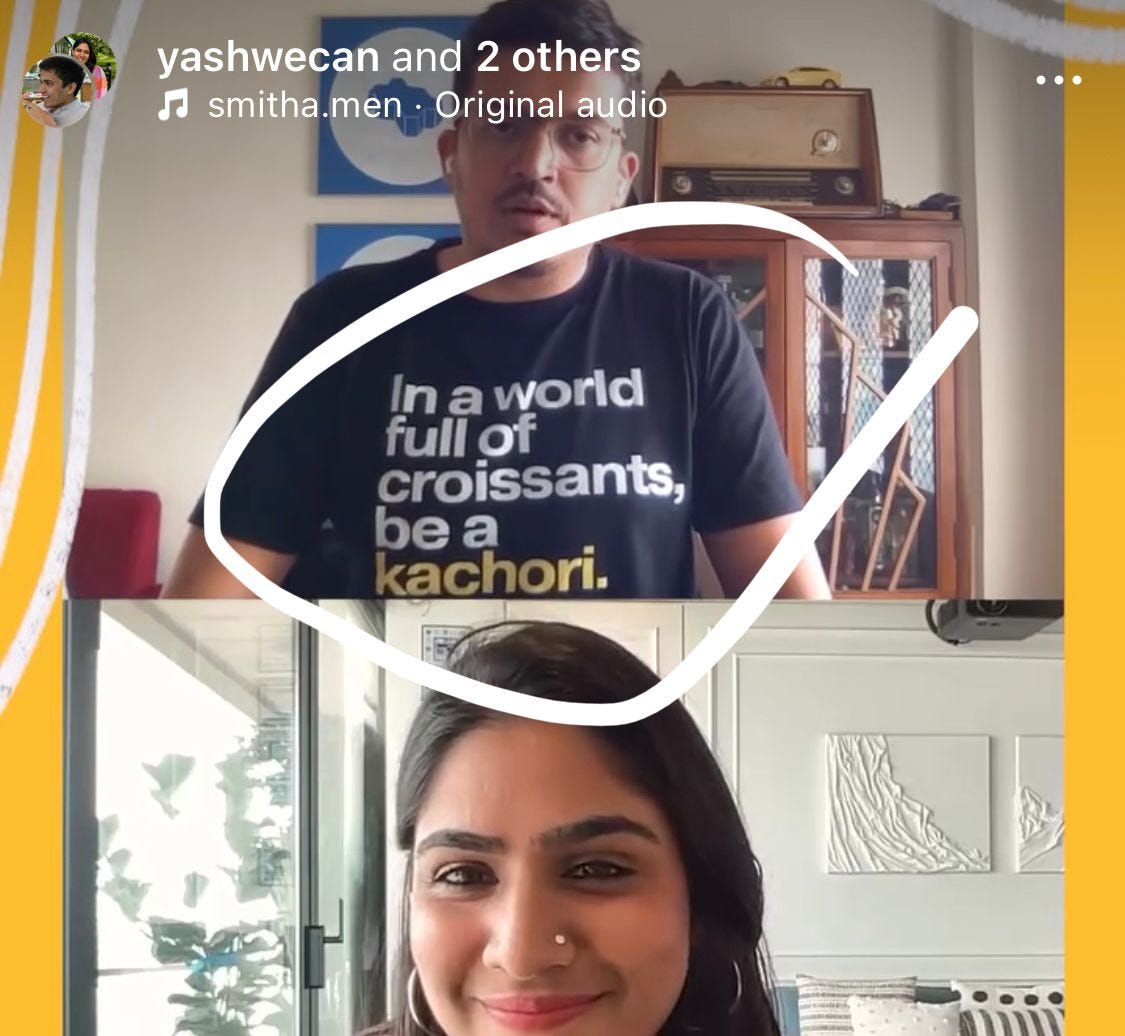
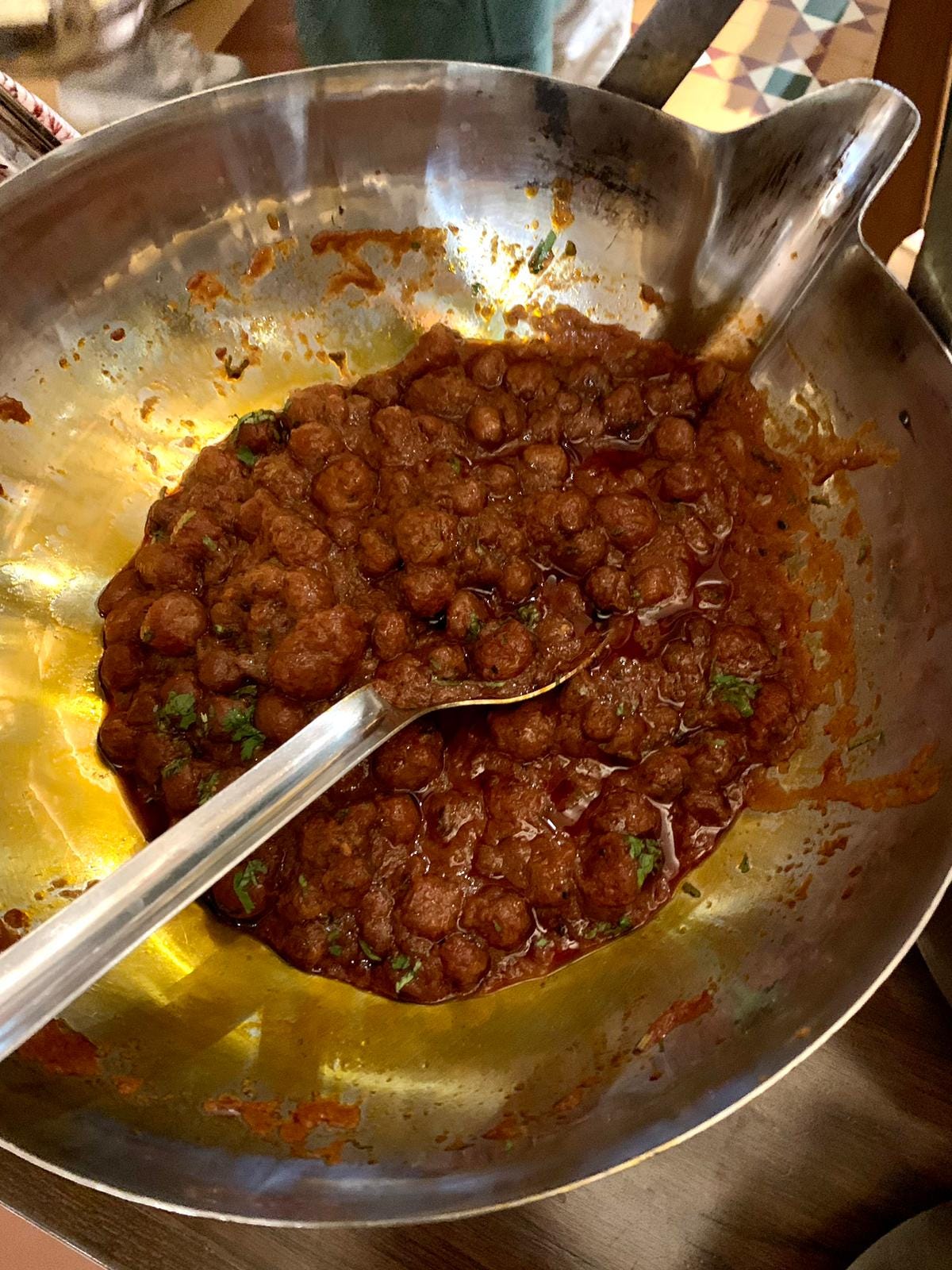
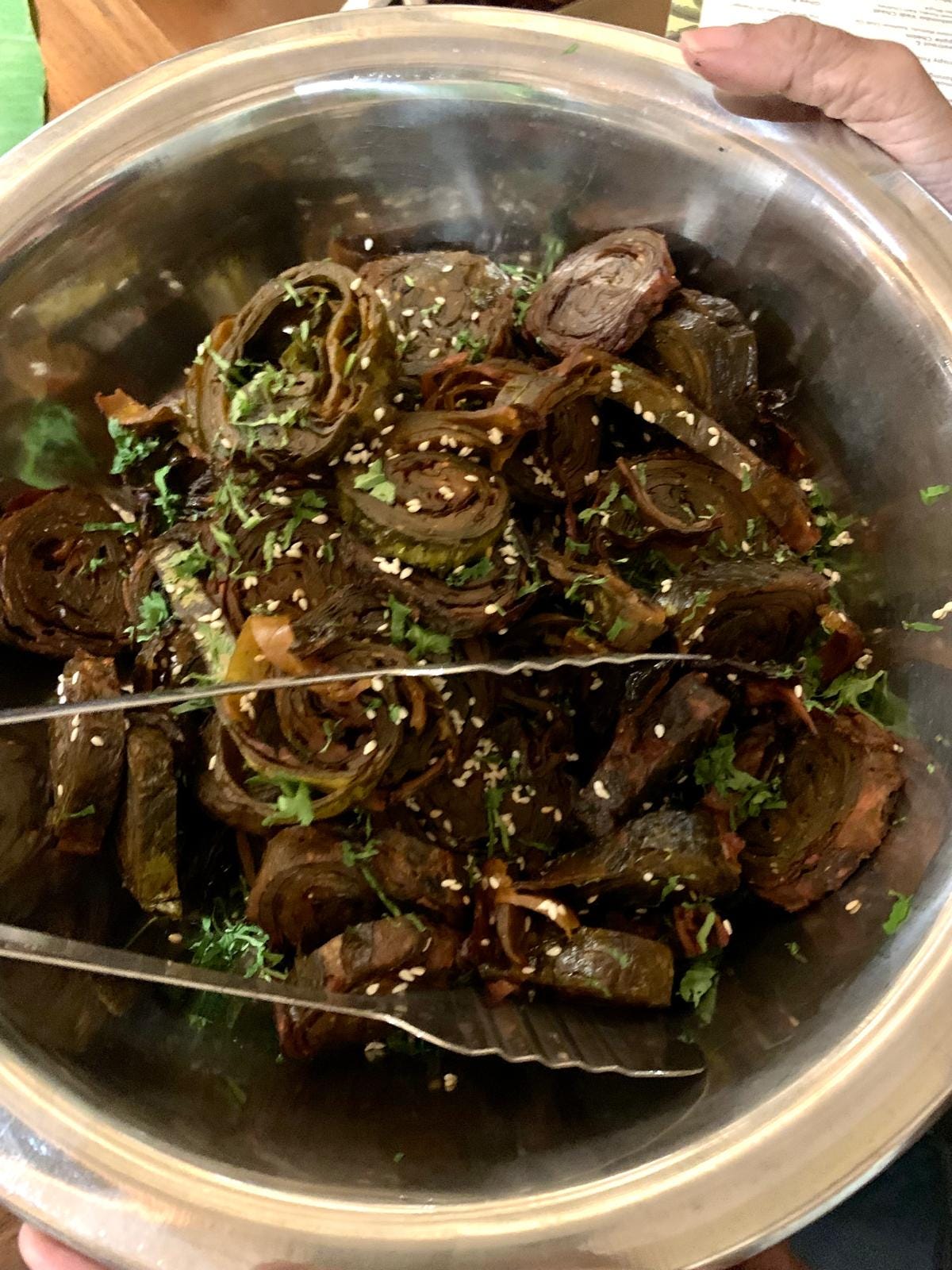

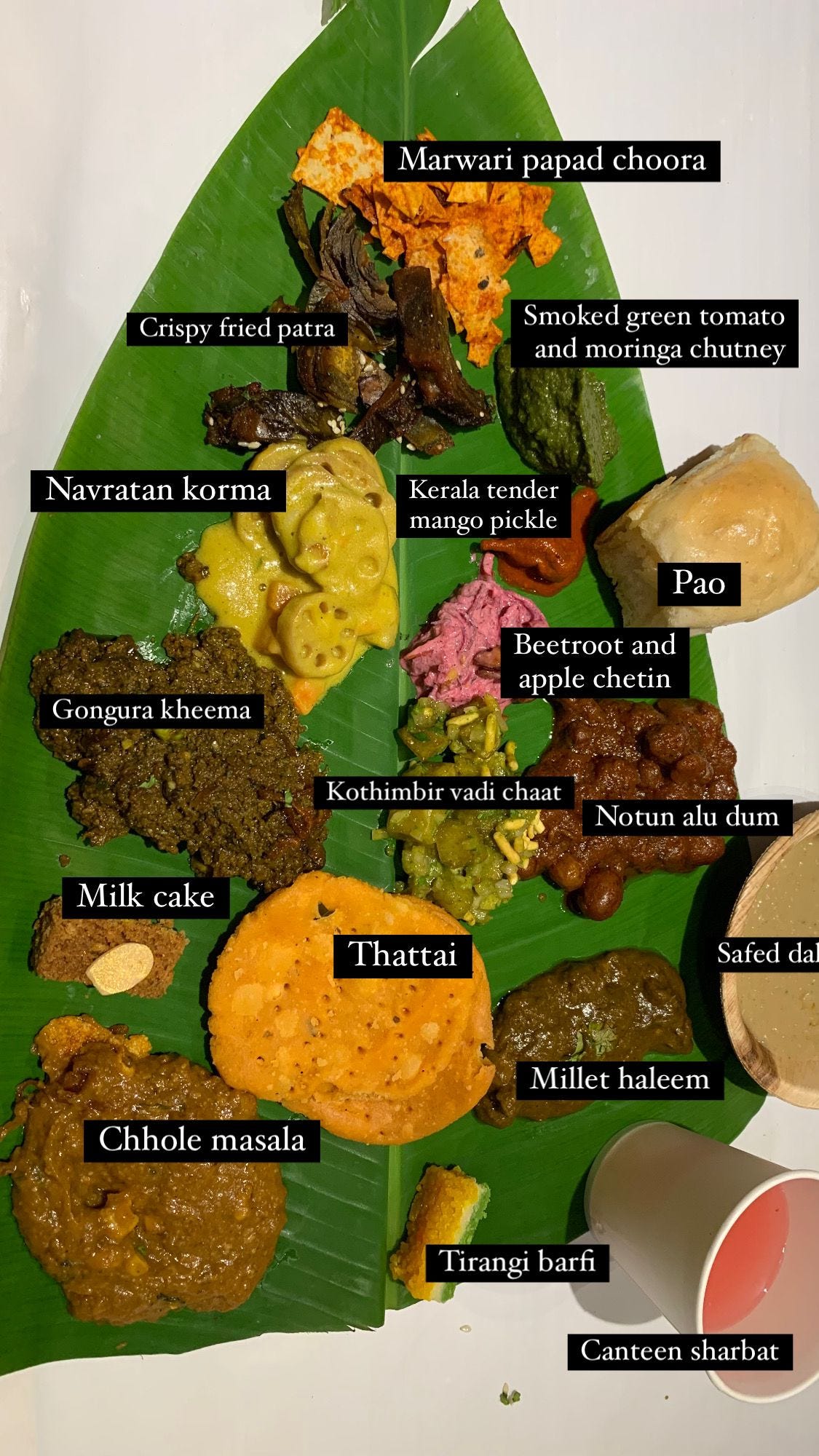
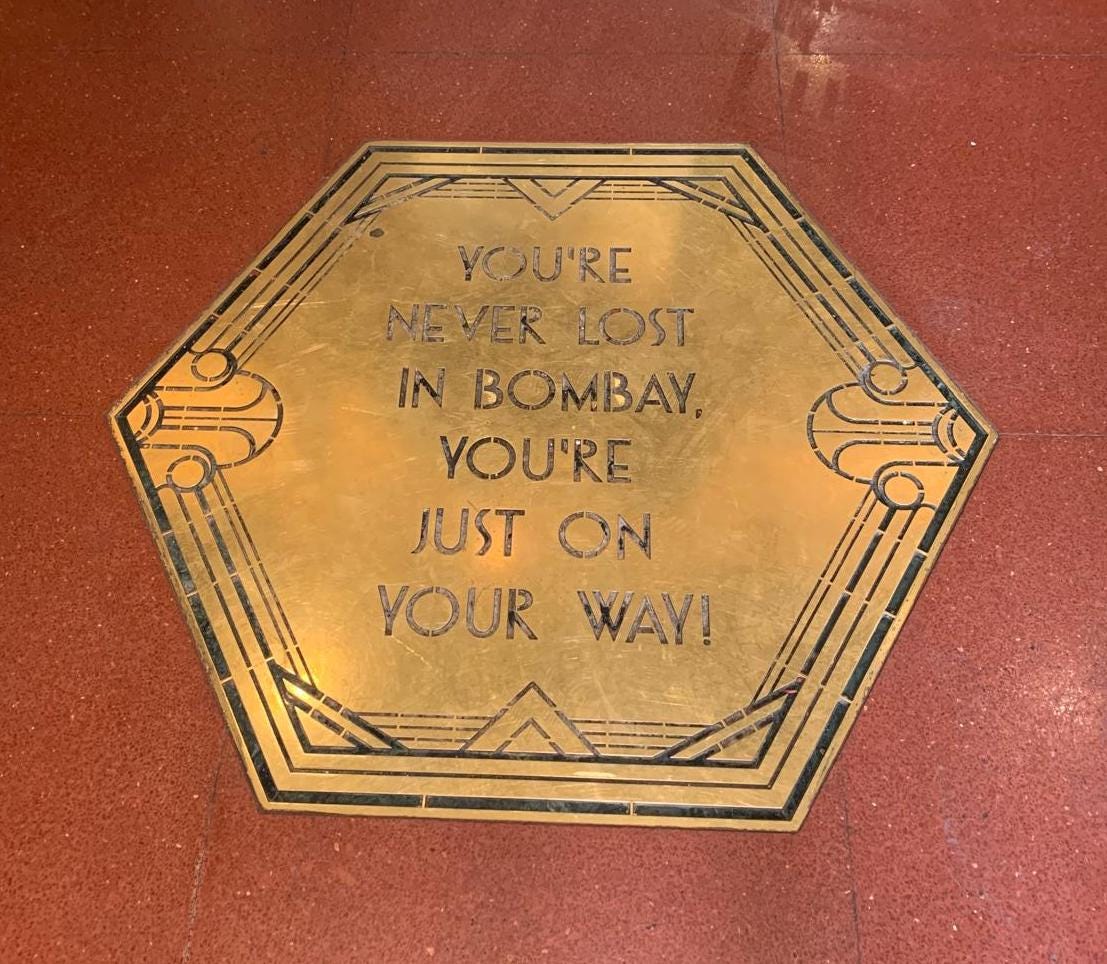
love, love, love this!